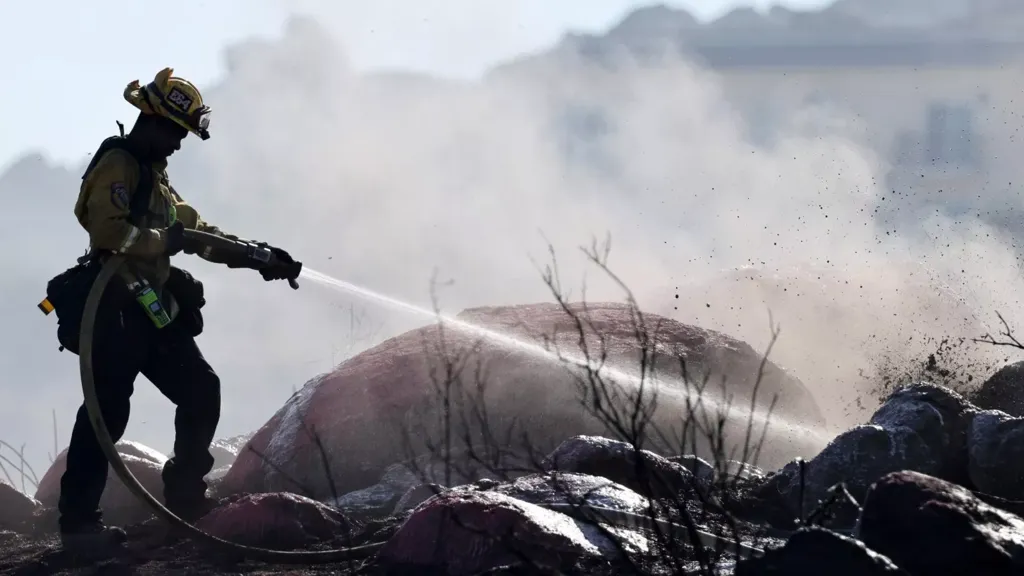Six months after the Eaton Wildfires ravaged Los Angeles County (Altadena and Palisades), many families are still navigating systems and deliberating on whether or how to rebuild. As the 2025 hurricane season begins, the National Oceanic and Atmospheric Administration (NOAA) warns it may be one of the most active in decades, a stark reminder that communities must prepare even as they recover.
Amid these escalating threats, there's deeper uncertainty: Who will show up when disaster strikes? FEMA's acting administrator has acknowledged gaps in hurricane readiness, and staff reductions are shifting more response responsibilities to under-resourced state and local governments. This moment underscores what many already know: disaster recovery systems are failing those who need them most.
What if recovery didn't depend on navigating broken systems? What if the people closest to the crisis were trusted to lead the response?
As a former mayor, I've led through emergencies and the aftermaths that rarely make the headlines. I've seen both the resilience of communities and the dysfunction of the systems meant to support them. But I've also seen what's possible: meeting disasters with equity, speed, and local innovation.
When the fires hit, I led a coalition of local partners alongside former Stockton Mayor Michael Tubbs, founder of End Poverty in California, and my team at FORWARD launched the Dena Care Collective, a new disaster response approach. The Dena Care Collective is providing over $1 million in direct cash assistance to Altadena families left behind by traditional disaster systems, helping them rebuild quickly, with dignity, and without red tape. We've also empowered additional relief efforts to quickly administer emergency funding to local families, including the Los Angeles Unified School District Education Foundation fund.
This model offers valuable lessons that other communities can learn from, especially as disasters become more severe and frequent. Recognizing that even well-intentioned systems can be slow and inaccessible, we built a single-entry platform that scales, reduces delays, and improves outcomes. Families could check their status with one click, and funds were delivered within days—restoring trust and transparency.
But our national model isn't just outdated—it's inequitable. Renters are overlooked. Small business owners are told to wait. Low-income families don't have the luxury to process their grief or process their loss while navigating disparate systems not designed for them.
Data shows that underserved neighborhoods often receive less FEMA funding than wealthier areas. But when recovery systems leave people behind, everyone pays the price. According to the National Institute of Building Sciences, every $1 spent on disaster mitigation saves an average of $6 in future disaster-related losses. Faster aid strengthens local economies and protects long-term health and safety.
We can't continue to accept the status quo. Apathy is both costly to families and expensive to taxpayers. Communities everywhere can adopt the same principles: lean into local leadership; integrate smart technology; embed equity; mandate efficiency from the start. Real-time data can help identify households with the greatest need while community-based partnerships ensure that aid reaches people in culturally competent and efficient ways. That's what responsive recovery looks like.
Technology alone isn't enough. This model succeeds because it combines tech with deep community relationships. In Altadena, community-based organizations were essential to delivering personalized support that addressed immediate needs while installing critical infrastructure to support long-term recovery: mental health, housing, and more. This approach addresses the short-term crisis and builds long-term resilience, necessary in an era of ever-worsening climate disasters.
These outcomes resulted from strong partnerships between civic groups, governments, technologists, and philanthropic organizations. In the case of the Dena Care Collective, relationships across civic groups, technologists, and funders like the California Community Foundation delivered critical support to unlock smart, accessible, and integrated community infrastructure. The takeaway here is simple: empower local networks; leverage technology for efficiency; unlock data-informed investments; always center the needs of those most affected.
To be clear: this is not about placing blame on any one institution. Governments and nonprofits are doing the best they can with the tools they have. But the truth is, those tools are too often outdated, underfunded, or misaligned with community realities. Without reform, those tools will fail the people they're meant to serve.
States and cities don't have to wait for federal reform. But agencies like FEMA and HUD must also evolve to support faster, locally led models that center equity, especially as we face what could be one of the most destructive hurricane seasons in recent memory. They can start by investing in integrated technology that unlocks communication, resource administration, economies of scale and real-time data tracking.
Critics may call this approach expensive. The reality is that technology innovation has made data accessible and equity possible. Gone are the days when antiquated approaches are the only approaches. Data gaps, inaccessibility, and disparate systems delay recovery strain community ecosystems decimate local economies not to mention eroding public trust. When families stay housed healthy financially stable entire communities thrive.
Our current system isn't built for the people who need it most. We must design recovery that actually serves them: by cutting delays, removing barriers, and investing in trusted local networks.
We don't need to start from scratch. It's time to fix what's broken and scale what's working. As climate disasters become more frequent and severe, recovery must be fast, fair, and led by the people who know their communities best.
